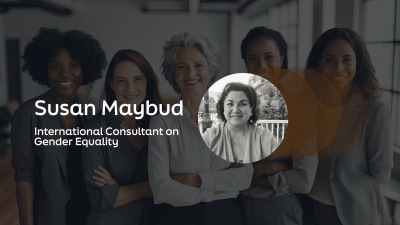
Improving access to redress for workers vulnerable to violence and harassment in South Asia
Experts discuss the factors that make some workers more vulnerable than others to violence and harassment.
This page is approximately a 4 minute read
This page was published on

Nobody should go to work, worried about being confronted with violent behaviour or harassment of any kind. Sure, there are jobs that have inherent risks built into the profession, for example police and healthcare, but most of these occupations have prevention protocols to mitigate the risks. In general, work environments should feel safe.
We also know that organisations work to put preventive measures in place to keep their workers safe from physical dangers in the workplace, but people - quite rightly - also expect to be kept safe from harassment at work. Yet, unfortunately the risk of workplace violence and harassment is more prevalent than often acknowledged.
The latest report from Lloyd’s Register Foundation’s World Risk Poll – Safe at Work? Global experiences of violence and harassment – provides us with reliable data and insights that we haven’t seen before. Crucially, the Poll reveals that one in five people globally (21%) have experienced violence and harassment at work in their lifetime. This finding is worrying and shows that the issue is more than an often whispered - and covered up - problem. Furthermore, psychological harassment (such as insults, threats, bullying, or intimidation) is the most common form of workplace abuse globally, with 17% of people saying they have experienced this during their lifetime.
The data also underlines key regional variations. For example, Australia is the country where the highest proportion of people said they had experienced violence and harassment at work, at almost half (49%). Furthermore, five of the top 10 countries where people have experienced violence and harassment are Nordic nations: Finland (48%), Iceland (42%), Denmark (42%), Norway (42%) and Sweden (37%).
In contrast, Central Asia and South-Eastern Asia are two regions where respondents report the lowest level of workplace violence and harassment, with Central Asia reporting an overall 5%. Is this because there really are lower levels of violence and harassment in these regions, or are there other reasons? In the case of Nordic countries, women are strongly empowered to expect gender equality in society and the workplace, and this is backed by stringent national laws and company regulations.
Women who are more educated and have risen through the ranks may also be confronted with patriarchal attitudes and resentment. While we can’t say with certainty why the figures in Central Asia and South-East Asia are low, it could be because of a lack of legal backing, limited recourse in workplaces, or even personal shame felt by individuals who have experienced violence or harassment at work, all causes that need further research.
The physical and mental health impact of violence and harassment in the workplace is being recognised as an increasingly important area of risk, and research such as this Poll can go a long way to influencing policy at international, national, sectoral and workplace levels. Prevention, as with any risk mitigation strategy, will be key.
Depending on institutional norms, historic traditions, or cultural customs, the understanding of violence, and especially harassment, may seem fluid and unclear. Through community awareness and public information campaigns, individuals can become better informed, perceptions can change, and laws can be clearly formulated with governance systems, including judiciary, to protect people.
We know that there may be a fear of reprisal from authorities within workplaces, and that people worry that their anonymity may not be protected. This could be because the right processes are not in place, which is preventing people from reporting cases of harassment. It’s important that organisations and companies work to change the culture, help their employees understand policies and work to diminish the real fear of reprisal. On the flip side, it's also important that employees understand the seriousness of false accusations.
In June 2021, ILO Convention 190 came into force as the first international treaty to recognise the right of all to a world of work free from violence and harassment. The World Risk Poll data offers a crucial component to help promote this important Convention and can support policymakers in their decisions about preventing violence and harassment at work. Support from the International Labour Organization can also assist governments, employers, and worker organisations in designing targeted policies and interventions. Assistance for specific sectors, for example health sector workers who face violence and harassment from patients and their families, can also be provided.
For those of us who strive for more equality, diversity and inclusion in our societies and workplaces, being equipped with the appropriate data is key. It is evident that workplace violence and harassment is prevalent - we only have to look at toxic masculinity on numerous social media platforms which may well impact workplaces or the sexual harassment cases that the ‘Me Too’ movement is highlighting. This is today’s zeitgeist, and the World Risk Poll findings will contribute to the ultimate goal of preventing violence and harassment in our workplaces.